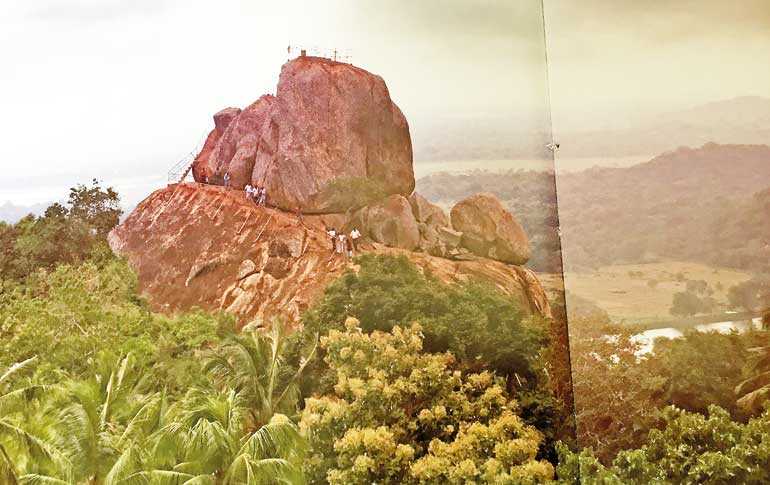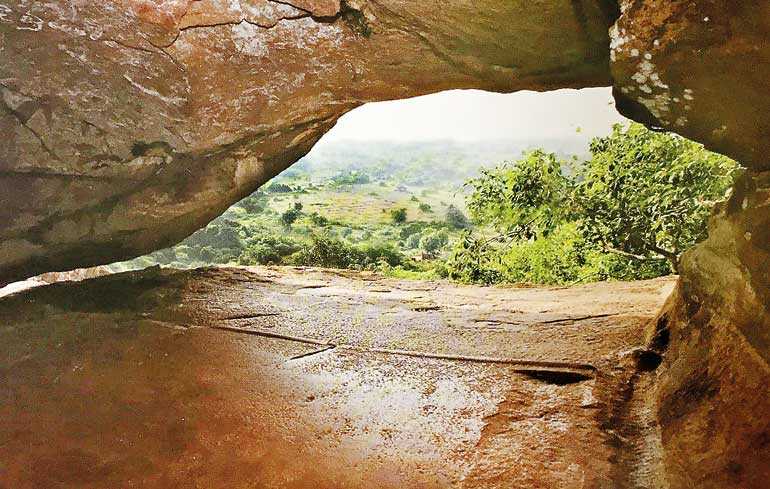Tuesday Mar 18, 2025
Tuesday Mar 18, 2025
Saturday, 15 June 2019 03:38 - - {{hitsCtrl.values.hits}}

By D.C. Ranatunga
Next to Vesak Poya which commemorates the Birth, Enlightenment and Parinirvana of Gotama the Buddha, Poson Poya, the full moon Poya in the month of June, is the most significant Poya day for the Buddhists in Sri Lanka. As every Buddhist knows, the Poson Poya commemorates the visit of Arahant Mahinda to Sri Lanka to introduce Buddhism to the people.
Arahant Mahinda’s father, King Asoka of Jambudwipa (as India was then known) having embraced Buddhism sent missionaries to neighbouring countries to propagate Buddhism. It was on such a mission that Arahant Mahinda came to Sri Lanka. The ruling king in Sri Lanka, Tissa (he became Devenampiya Tissa after he embraced Buddhism) and King Asoka (later Dharmasoka) seemed to have known each other.
“Mahinda and his companions transport themselves by air from Vesasagiri to Mihintale, gods are at hand to make smooth the path of the religious teachers, and impress the multitude with the efficacy of their doctrines. Earthquakes which do no harm to anyone vouch for the veracity of the prophesies ascribed to the Saint. At sermons preached on important occasions, the Devas in the congregation far outnumber the humans. Elephants, without anyone’s bidding, indicate to the king the exact spots on which sacred shrines are to be sited. In spite of this legendary overlay, the main event, i.e. that Buddhism was accepted by the people and ruler of Ceylon, is attested by the presence of Mihintale and Anuradhapura of epigraphical and other monuments of Buddhist character attributable to that period. In the Brahmi inscriptions at Mihintale occur the name of a king Devanampiya Tissa, though one cannot be quite certain that he was the contemporary of Asoka; but Uttiya, the younger brother of Tissa, can be recognised without any reasonable doubt.” So writes Professor Senerat Paranavitana in ‘History of Ceylon’ (1961). On the full-moon day of Poson the king had gone to the Missaka hill (Mihintale) on a hunting expedition when Arahant Mahinda appeared on the rock, which later came to be known as ‘Aradhana gala’. After a brief conversation, realising that the king was intelligent enough to grasp the doctrine, the Thera delivered a discourse to him and his followers.

On the king’s invitation Arahant Mahinda came to Anuradhapura city where he took up abode in the royal pavilion in the Mahamegha Park (Mahamevuna Uyana). A number of sermons were preached in the days that followed where the lay persons amounting to thousands who listened, became Buddhists. Many entered the Order.
The royal park was granted by the king to the Sangha and the king fixed the boundaries himself. Thus was established the Mahavihara which became the celebrated centre of the Buddhist religion.
Arahant Mahinda along with his disciples spent the ‘vassana’ (vas) – rainy season – in caves prepared for their occupation in Mihintale. He spent most of his time at his cave and it came to be known as ‘Mihindi Guha’. He used the rectangular area in the cave to rest.
To reach the cave the pilgrims have to first climb a set of steps. The climb is quite smooth for two reasons. One is that they are not steep and are easy to climb. The other is the shade offered by ‘araliya’ trees on either side of the steps. Once the climb is over, you reach the area where Arahant Mahinda and the king had met after the former came down from the rock. The place is identified with the Ambastala Dagaba built there. Turn right and climb the steps to reach the Kantaka Cetiya, an elaborate cetiya with ornamental gateways on four sides.
In ‘Poya Days’ (1924) Marie Musaeus Higgins ends the significance of Poson Poya thus: “Even at the present day after two thousand years on the Fullmoon Day of Poson Masse, the event of Mahinda’s ‘Coming to Lanka’ and introducing Buddhism, is always spoken of because he was the first Buddhist Missionary and if he had not been for him the Sinhalese would never have known Buddhism.
“Therefore let us think with love and gratitude of the Thera Mahinda, the son of the great King Asoka of India.”
Pix by Sarath Perera
Discover Kapruka, the leading online shopping platform in Sri Lanka, where you can conveniently send Gifts and Flowers to your loved ones for any event including Valentine ’s Day. Explore a wide range of popular Shopping Categories on Kapruka, including Toys, Groceries, Electronics, Birthday Cakes, Fruits, Chocolates, Flower Bouquets, Clothing, Watches, Lingerie, Gift Sets and Jewellery. Also if you’re interested in selling with Kapruka, Partner Central by Kapruka is the best solution to start with. Moreover, through Kapruka Global Shop, you can also enjoy the convenience of purchasing products from renowned platforms like Amazon and eBay and have them delivered to Sri Lanka.
Discover Kapruka, the leading online shopping platform in Sri Lanka, where you can conveniently send Gifts and Flowers to your loved ones for any event including Valentine ’s Day. Explore a wide range of popular Shopping Categories on Kapruka, including Toys, Groceries, Electronics, Birthday Cakes, Fruits, Chocolates, Flower Bouquets, Clothing, Watches, Lingerie, Gift Sets and Jewellery. Also if you’re interested in selling with Kapruka, Partner Central by Kapruka is the best solution to start with. Moreover, through Kapruka Global Shop, you can also enjoy the convenience of purchasing products from renowned platforms like Amazon and eBay and have them delivered to Sri Lanka.